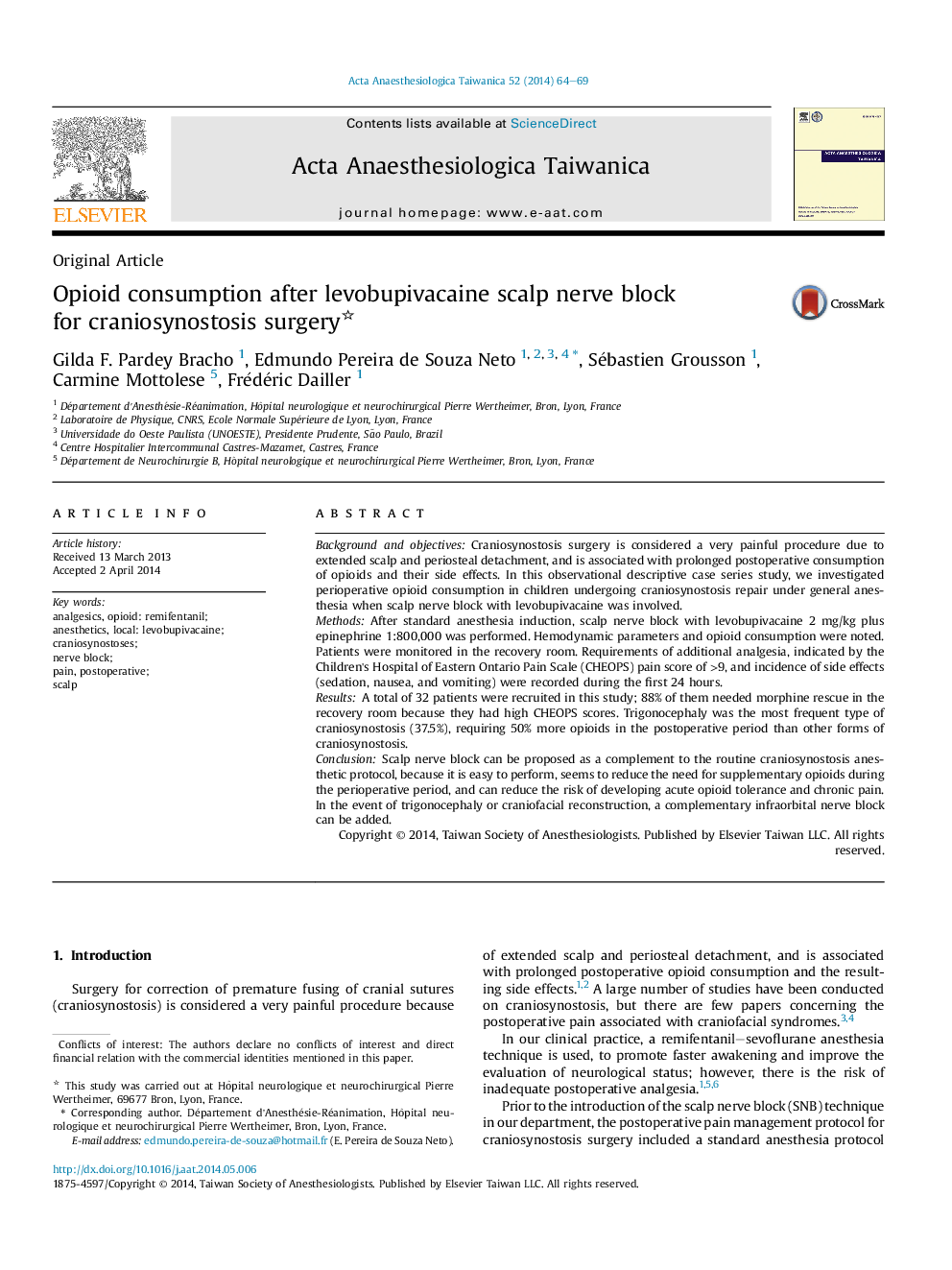| Article ID | Journal | Published Year | Pages | File Type |
|---|---|---|---|---|
| 2741410 | Acta Anaesthesiologica Taiwanica | 2014 | 6 Pages |
Background and objectivesCraniosynostosis surgery is considered a very painful procedure due to extended scalp and periosteal detachment, and is associated with prolonged postoperative consumption of opioids and their side effects. In this observational descriptive case series study, we investigated perioperative opioid consumption in children undergoing craniosynostosis repair under general anesthesia when scalp nerve block with levobupivacaine was involved.MethodsAfter standard anesthesia induction, scalp nerve block with levobupivacaine 2 mg/kg plus epinephrine 1:800,000 was performed. Hemodynamic parameters and opioid consumption were noted. Patients were monitored in the recovery room. Requirements of additional analgesia, indicated by the Children's Hospital of Eastern Ontario Pain Scale (CHEOPS) pain score of >9, and incidence of side effects (sedation, nausea, and vomiting) were recorded during the first 24 hours.ResultsA total of 32 patients were recruited in this study; 88% of them needed morphine rescue in the recovery room because they had high CHEOPS scores. Trigonocephaly was the most frequent type of craniosynostosis (37.5%), requiring 50% more opioids in the postoperative period than other forms of craniosynostosis.ConclusionScalp nerve block can be proposed as a complement to the routine craniosynostosis anesthetic protocol, because it is easy to perform, seems to reduce the need for supplementary opioids during the perioperative period, and can reduce the risk of developing acute opioid tolerance and chronic pain. In the event of trigonocephaly or craniofacial reconstruction, a complementary infraorbital nerve block can be added.
